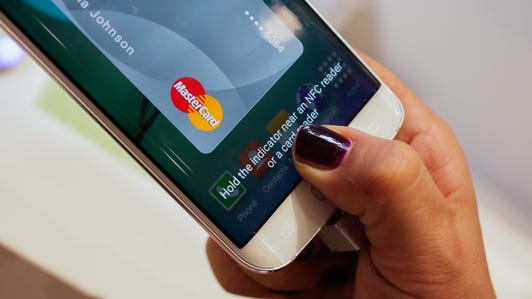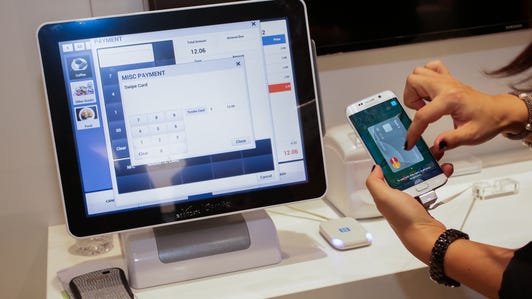 Enlarge Image
Enlarge ImageJames Martin/CNET
Stateside Samsung phone users can now leave their wallets at home.
Samsung Pay, the company’s mobile payments service, went live in the US on Monday. The service lets users pay for items using their phones or upcoming Gear S2 smartwatch, and it even works at older retail terminals that don’t accept Apple Pay.
Samsung Pay works with Galaxy S6, S6 Edge, Note 5 and S6 Edge+ smartphones running on wireless networks from AT&T, T-Mobile, Sprint and US Cellular. Verizon doesn’t yet support Samsung Pay, but Samsung said it’s still working with the wireless carrier on preloading the service on Verizon phones. Verizon had backed a mobile payments service of its own — initially called Isis but rebranded Softcard — but the service was absorbed by Google Wallet/Android Pay earlier this year.
Samsung also plans to expand the service to China, Spain and the UK.
“Samsung Pay works with almost any card terminal from day one and Galaxy owners can shop with a wallet they never knew was always in their hands,” Injong Rhee, head of Samsung Pay, said in a press release.
The South Korean smartphone maker first unveiled Samsung Pay in March. The idea is for users to pay for items by waving their smartphone near a store’s checkout register instead of swiping a credit card. It’s much like Apple Pay, which went live a year ago. The hope for both Samsung and Apple is that the addition of yet another feature will further build customer loyalty at a time when competition for smartphone customers is fierce.


Now playing:
Watch this:
Samsung Pay on Samsung’s latest phones, hands-on
0:39
Samsung believes it has an advantage with its system, which it obtained through the purchase of LoopPay earlier this year, because it will allow devices like the Galaxy S6 and S6 Edge to work with many more merchants and stores. Samsung Pay will use a near-field communication, or NFC, chip to talk with compatible registers. But it also uses a LoopPay technology called Magnetic Secure Transmission that works by holding the phone near a traditional card swipe reader, essentially making it backward compatible for nearly all payment terminals.
Apple Pay also employs an NFC chip into its smartphone. But there are still few registers that have the NFC technology, which limits adoption and usage.
Samsung Pay launched in South Korea on August 20, and Samsung said adoption in its home country has been quick. In the first month, users have spent more than $30 million using the service through more than 1.5 million total transactions, the company said. About 60 percent of those transactions were through the Galaxy Note 5, which Samsung introduced in August.
“The responses we’re getting from customers are really phenomenal,” Rhee said last week during an event hosted by Visa in San Francisco. “It really exceeds our highest expectations. We’re seeing thousands of users signing up per day and activating Samsung Pay.”
To get more people in the US to sign up for Samsung Pay, the company is offering users who activate the service on their Galaxy Note 5 or Galaxy S6 Edge+ a free wireless charger or a free wallet flip cover. The offer is valid through October 11.
Update, 12:05 p.m. PT: Adds information about Verizon.
Update, 4:30 p.m. PT: Adds information about promotion for free case.
How Samsung Pay works (pictures)









